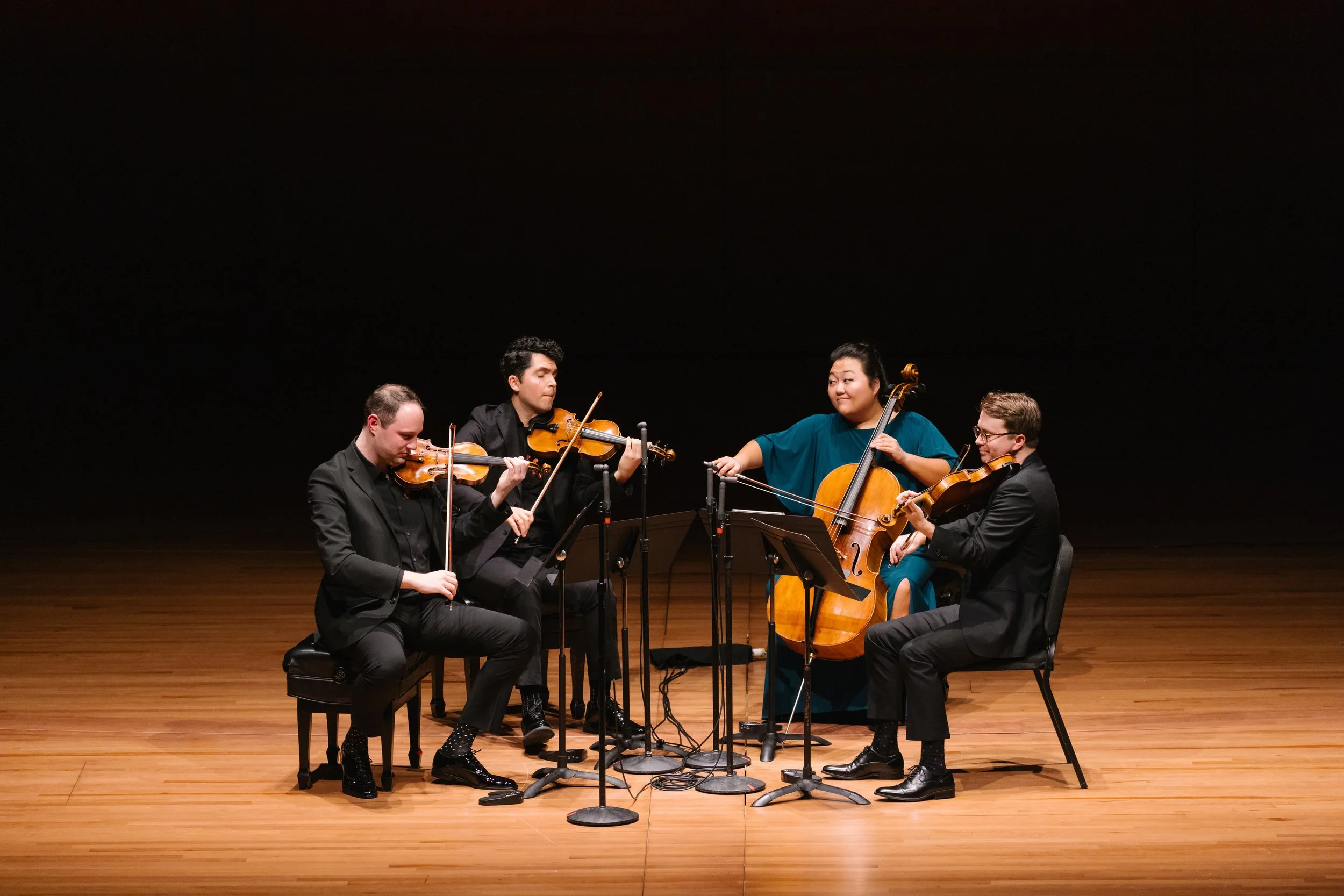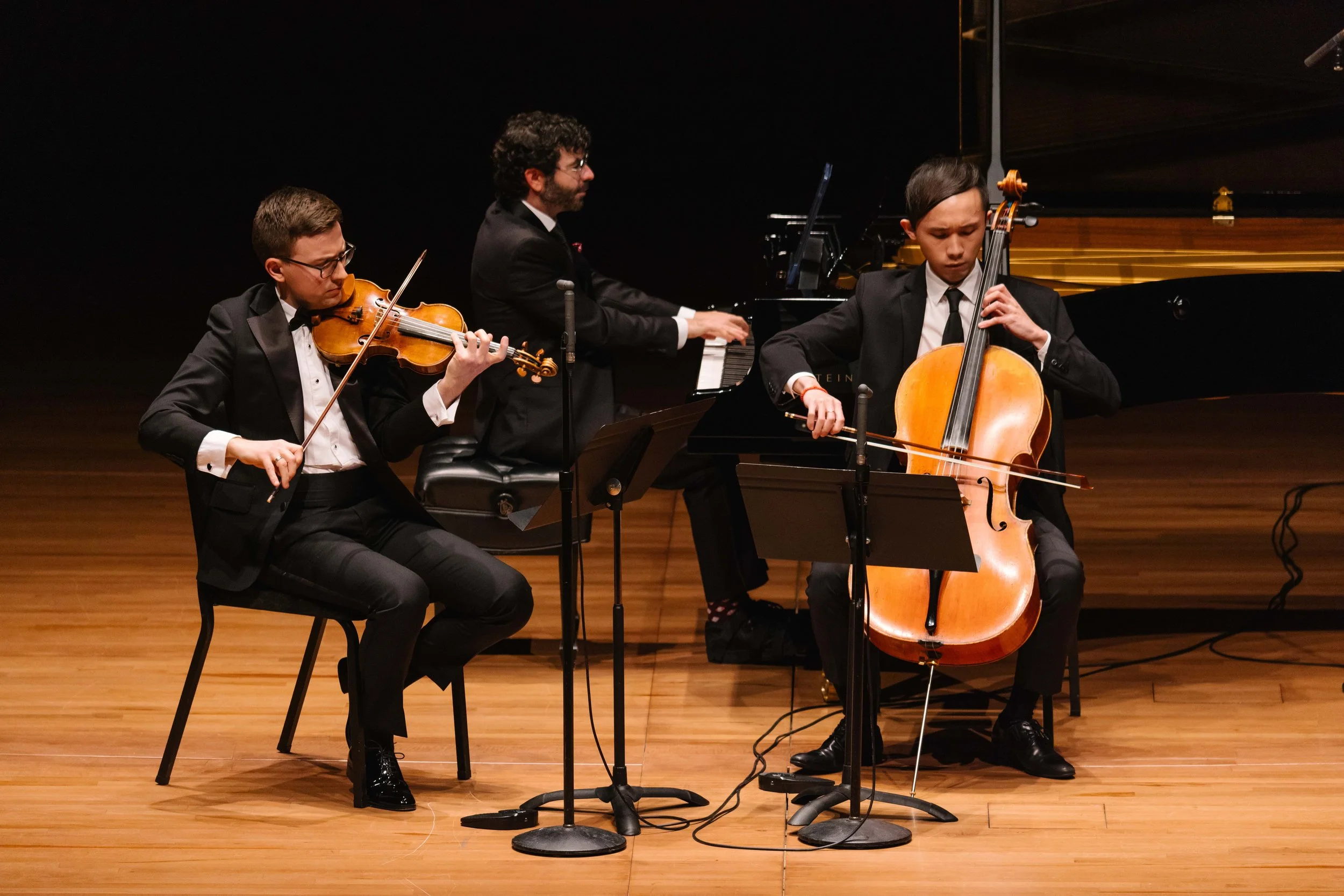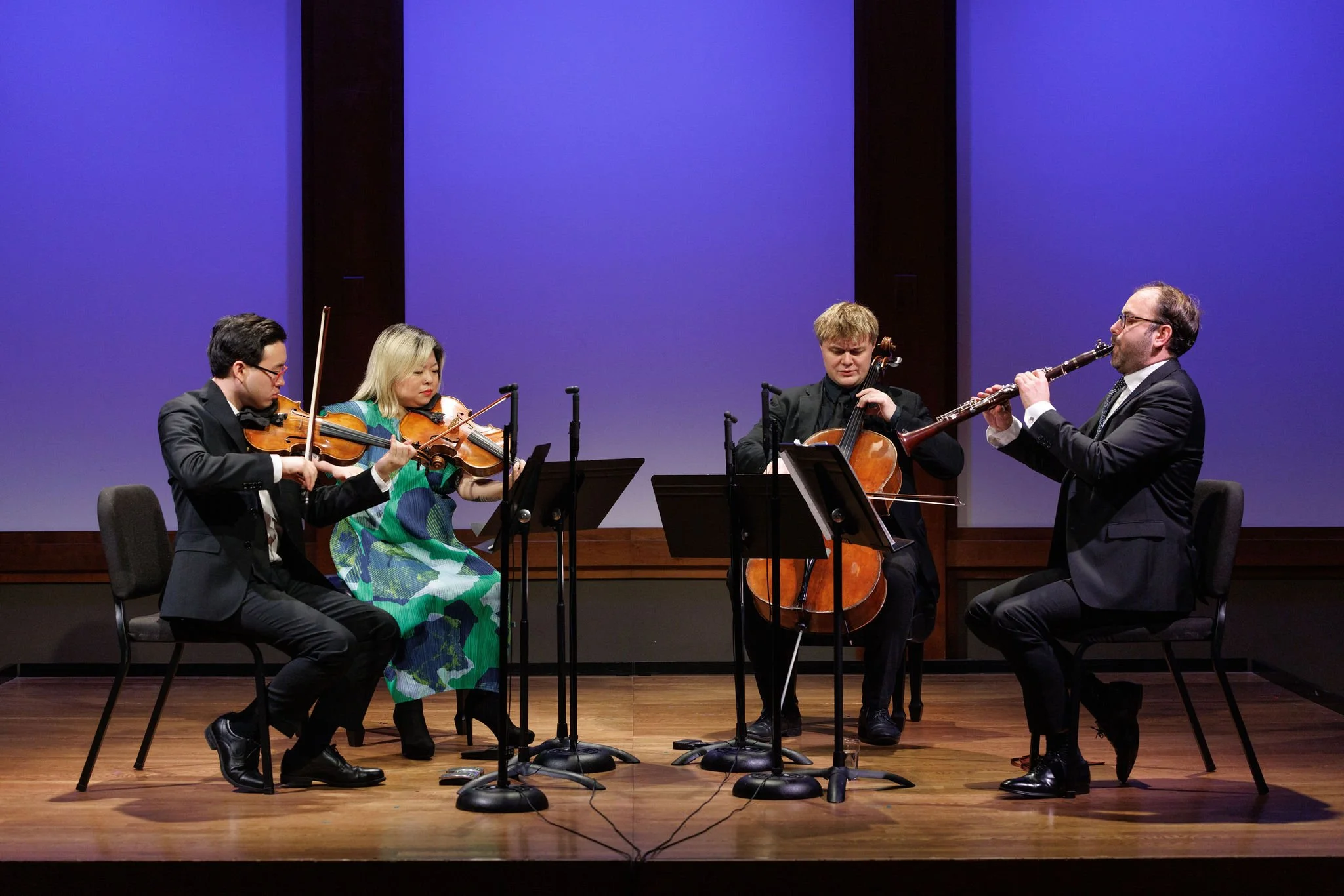REVIEW: Calidore Quartet In Perfect Balance
Above, the Calidore String Quartet. Photo by Da Ping Luo.
Chamber Music Society of Lincoln Center’s Winter Festival: Quartet Panorama is showcasing some of today’s most exciting string quartets. Violinists Jeffrey Myers and Ryan Meehan, violist Jeremy Berry, and Estelle Choi, cellist, are the Calidore String Quartet. This focused, energetic ensemble has been concertizing and winning accolades for more than a decade.
They’ve even recorded the late Beethoven quartets, which requires depth. They brought that depth — a sense of adventure with the details well in place — to Alice Tully Hall for a perfectly balanced program: Baroque forms, studied and interpreted by later composers, and full-fledged quartets that embodied the next chapter. Mozart’s take on Bach Fugues. Then Mendelssohn, who echoed Mozart in the early Romantic era. Meanwhile, over in England — Purcell, as Britten heard him, and then Purcell as inspiration for Britten’s new language.
Opening with Mozart’s transcription of Five Fugues from J. S. Bach’s The Well-Tempered Clavier, Book II, for string quartet was a wise warm up — lifting and balancing each of the four voices. The Calidore Quartet approached these fugues with the proper dose of studied period performance-practice — clean articulations, a bloom on long notes, harmonic suspensions that swelled, then receded. The coda of the C Minor fugue started fresh, and built like a gentle gust of wind to the final cadence. The E-flat Major fugue danced like a gavotte. The final cadence of the D-sharp Minor (transposed to D Minor here) was especially well-earned and satisfying. The final fugue in the set, in D Major, was jocular and celebratory.
Felix Mendelssohn’s 1837 Quartet in E minor, Op. 44, No. 2 demonstrates his adherence to Mozartian proportion, but Calidore plays Mendelssohn like Beethoven — that is to say, like something from the Classical period with the heat cranked all the way up. The Calidore Quartet kept the fiery first movement, Allegro assai appassionato, spry enough that glints of light escaped between accented chords. On first violin, Myers’ swift fingers and driving propulsion piloted a tightly squared, no nonsense traversal.
The second movement, Scherzo: Allegro di molto, flew like a buzzing insect. Berry, on viola, sang out with yearning warmth as the movement settled. The lyrical Andante was sunny and serene, the foursome’s sensitive rubato exuding a Romantic breeze — a nineteenth-century painting come to life. If Mendelssohn’s pastoral landscape can become dull to modern ears, he always comes through with a dazzling finale to rouse the weary. This Presto agitato did not disappoint: full-on action music, this was a battle scene, or a chase, in Calidore’s driven, dramatic reading.
Benjamin Britten revered his countryman and ancestor Henry Purcell, and orchestrated the Chacony in G Minor (which Purcell penned before Bach was born) for strings. Britten not only translated the music for modern instruments, but added his own elegance of orchestration, and point of view to this primitive tune by the composer of “Dido’s Lament.” The ideas of counterpoint and development of rhythm that he took from Purcell also fueled his Quartet No. 2 in C major, Op. 36.
Calidore Sring Quartet. Photo by Da Ping Luo.
In 1945, fresh from the success of his opera Peter Grimes, and mere months after the conclusion of the war, Britten wrote of the Second String Quartet to its dedicatee, Mary Behrend, “I’m so glad you got pleasure from it, because to my mind it is the greatest advance that I have made, and altho’ it is far from perfect, it has given me encouragement to continue on new lines.”
Composed in homage to Purcell, the Second Quartet was certainly influenced by its turbulent times, and is a quintessential statement of intense feeling and color. The group brought a theatrical sense of drama to the first movement, Allegro calms sense rigore. The second movement, Vivace, is a white-hot scherzo blazing with shiny, metallic colors and bustling energy. Piercing and dangerous, like a fireworks show, Britten sends little explosions of energy around the muted quartet with a lighting designer’s sense of spectacle. He composed in surround sound, and Calidore Quartet is the ultimate sound system.
The third and final movement, Chacony — Purcell on the mind — opens with a theme ripe with unadorned majesty, pregnant with possibility. A mountain is climbed, various elements are tackled, from a thicket of thorns to slippery ice. The ensemble’s technical assurance was distraction enough in some of Britten’s more arid passages.
Choi’s reassuring and heated cello arioso, atop shimmering trilling chords in the accompaniment, represented a turn of the tide. The jutting, diving theme returns, finally, in a grand statement punctuated with 21 resonant, stabbing C major chords, carved here with impressive vigor. For dessert, an encore of more Mendelssohn. Calidore’s performance proved they’re an acoustic force to be reckoned with.






